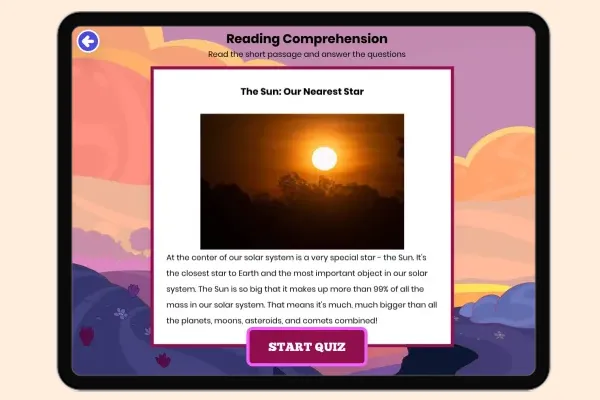Ocean Acidification Worksheet
- 4
- 5
- RI.4.4
This learning resource is available in interactive and printable formats. The interactive worksheet can be played online and assigned to students. The Printable PDF version can be downloaded and printed for completion by hand.
About the Ocean Acidification Worksheet
This interactive and printable worksheet, that aligns with the Common Core State Standards, Ocean Acidification introduces students to a critical environmental issue affecting marine ecosystems. Through comprehensive reading material and targeted questions, students explore how carbon dioxide emissions impact ocean chemistry and marine life, with specific focus on the scientific process of acidification and its effects on marine organisms.
Through multiple-choice and open-ended questions, students analyze the causes and consequences of ocean acidification, examining real-world examples like the Pacific Northwest oyster population decline. The worksheet combines scientific concepts with environmental awareness, helping students understand the connection between human activities and marine ecosystem health.
What will your child learn through this worksheet?
- Understanding of ocean chemistry and environmental impacts
- Recognition of human influence on marine ecosystems
- Knowledge of marine species vulnerability to pH changes
Learning Outcomes
- Students will explain the process of ocean acidification with 85% accuracy
- Students will identify three major impacts on marine life
- Students will connect human activities to environmental consequences
Cognitive
- This interactive worksheet develops scientific reasoning about environmental processes
- Students practice analyzing cause-and-effect relationships in ecosystems
Psychomotor
- The worksheet enhances scientific writing skills
- Students practice organizing environmental data and observations
Affective
- This interactive worksheet builds environmental awareness
- Students develop concern for marine ecosystem preservation
Reinforce
- The worksheet encourages discussion about environmental responsibility
- Students learn to communicate about scientific processes and impacts
Tags
ocean acidification, marine science, environmental science, climate change, ecosystem impacts, carbon dioxide, marine biology, pH levels, environmental conservation, scientific process, marine life, environmental impact, coral reefs, shellfish, ocean chemistry
Common Core Standards Covered
Perfect For:
- • Classroom assignments
- • Auto-graded assessments
- • Printable handouts
- • Home learning support
- • Homework help
- • Skill reinforcement
- • Curriculum planning
- • Self-paced learning
- • Progress tracking





















